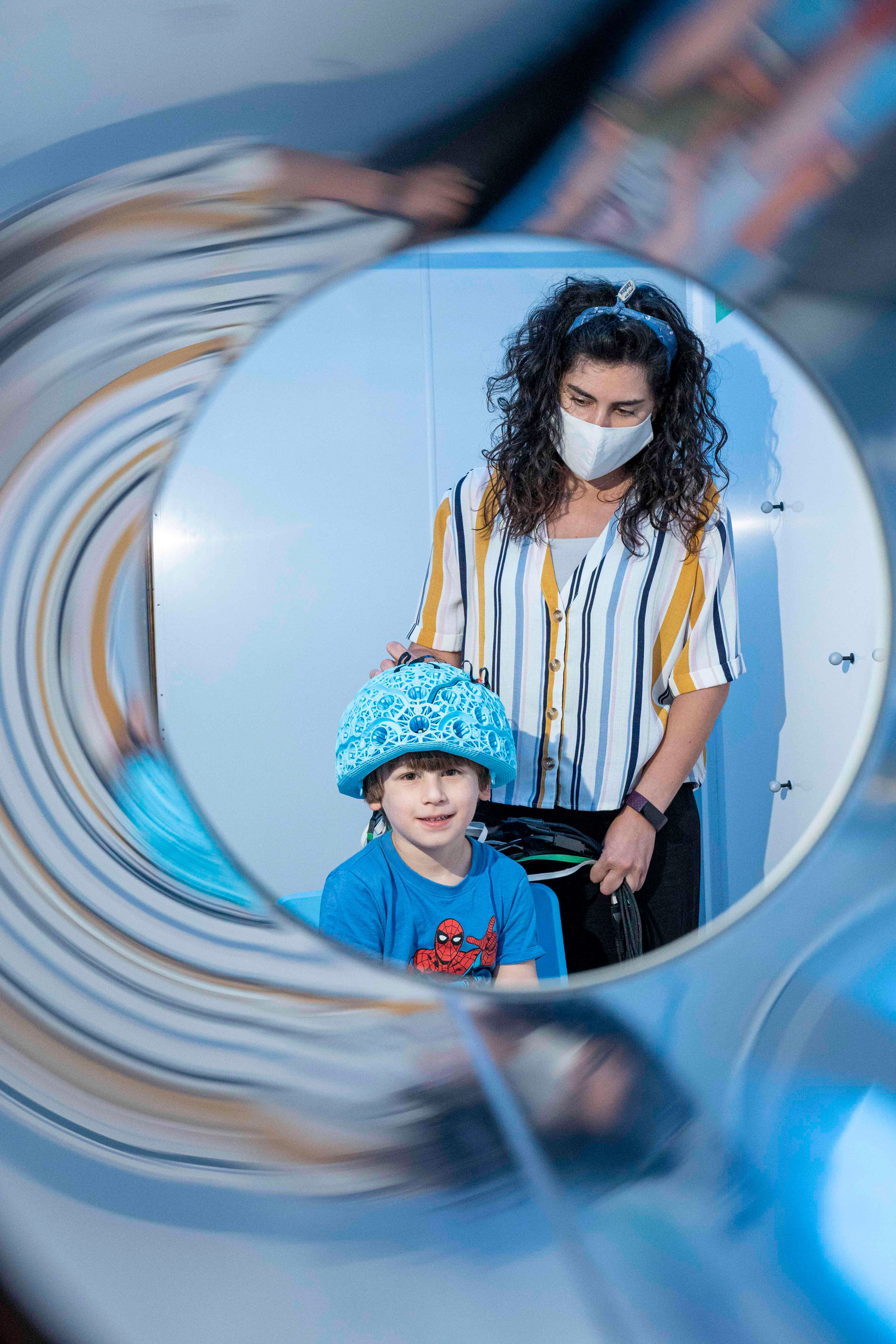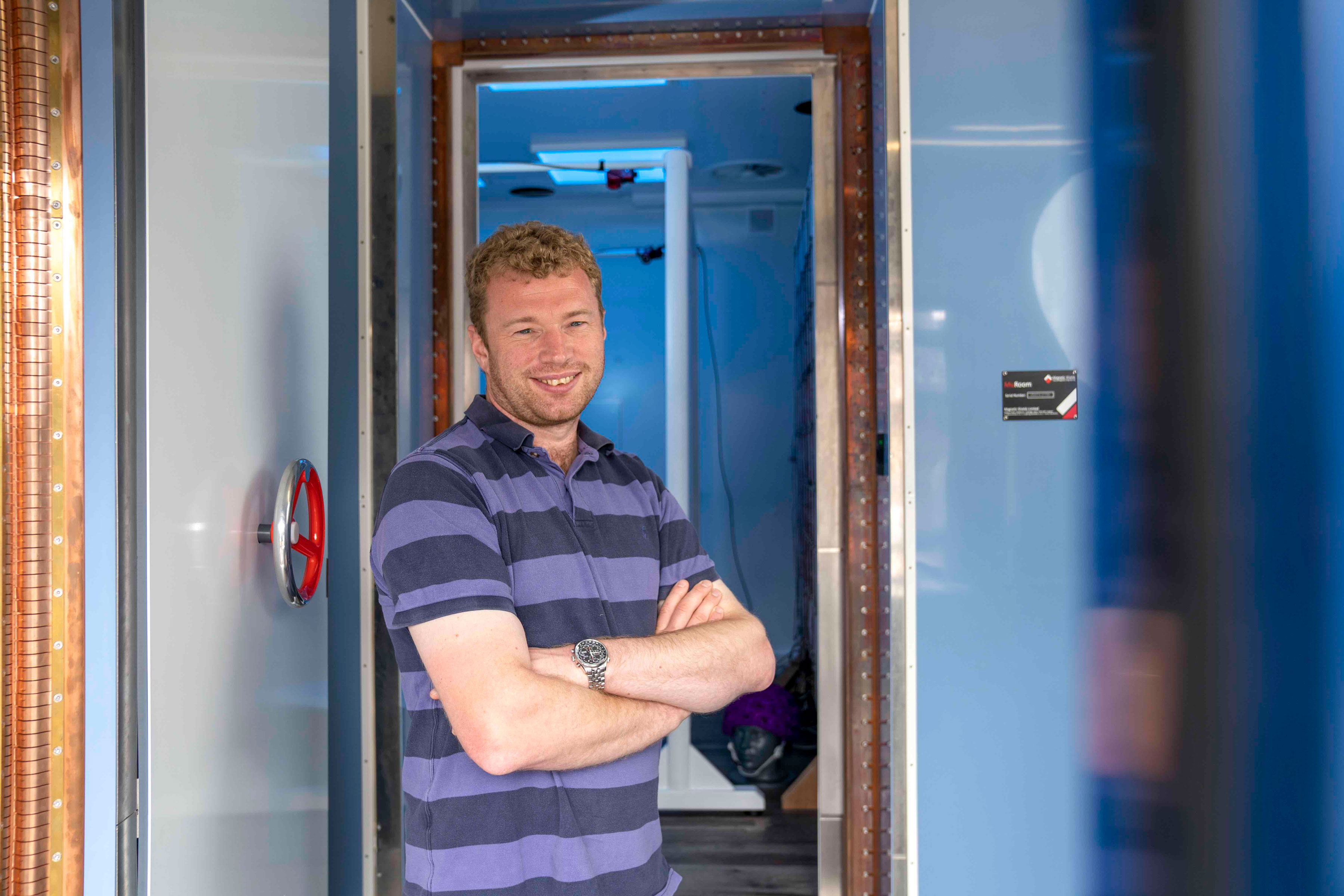A wearable brain imaging system developed by researchers at the University of Nottingham has been installed at the Hospital for Sick Children (SickKids) in Toronto for ground-breaking research into autism.
Cerca Magnetics, a Nottingham-based spin out company created to develop and distribute the state-of-the-art scanner, has successfully completed the first commercial installation of the new system.
This new type of brain scanner, which employs quantum enabled sensors to measure magnetic fields above the scalp (a process termed magnetoencephalography (MEG)) is being used by researchers in Toronto to scan children who have been identified as having a higher likelihood of developing autism due to siblings having the neurodevelopmentaldisorder.
World renowned neuroscientist Dr Margot Taylor is leading the Canadian study, that will scan the volunteer children from age 12 months onwards on a regular basis and track the development of brain function, looking for differences between those who do or do not develop autism.
Dr Taylor said: "Being an initial site for the Cerca OPM-MEG research system is incredible. For the Cerca team to have delivered the system on-time and with the achieved sensitivity and spatial accuracy, even in our busy city centre location and with the on-going challenges of travel during the pandemic, was truly excellent. We are very excited to be starting the longitudinal research study of brain function in the young siblings of children with autism and toddlers with autism. The Cerca OPM-MEG is essential for this cutting-edge research that was simply not previously possible."
The installation in Canada was headed up by Dr Ryan Hill, who two years ago using an earlier prototype system in Nottingham, became the first person to scan toddlers using this new quantum enabled device. In late July this year, he took on the challenge of installing the Toronto system, a job made significantly more difficult by the COVID-19 pandemic.
Dr Hill said: "In Nottingham, we are fortunate to have an environment relatively free from magnetic interference, but this is not the case for many institutions around the world (such as Sick Kids), where busy traffic, building work, metro systems, and other infrastructure in a busy city create a lot of magnetic interference. Thanks to the help and collaboration of the team at Sick Kids during the development of our system, we have been able to mitigate these problems, and successfully acquire high quality brain imaging data in young children and adults alike, including participants with dental wires that could not be scanned in traditional systems."

Whilst other MEG scanners exist, the Cerca system is unique since it is the only "wearable" MEG system where patients can move freely during the scan. It adapts to different head sizes, making it ideal for scanning children. It also offers considerably higher sensitivity and spatial specificity compared to the current state of the art MEG systems. And all of this is achieved at lower cost compared to conventional systems.
David Woolger CEO of Cerca said: "It is incredible to have installed our first system at a world leading research site twelve months to the day after the formation of Cerca. This is all down to the incredible hard work and effort by the team. It has been amazing to work with such talented and motivated people and I am excited to move forward with the next challenge, which is the move to clinical approval for the device as part of the treatment pathway for epilepsy. To be involved with this groundbreaking device which has the ability to improve the lives of so many children with neurological conditions is extraordinary."
Quantum technology
Conventional MEG scanners are based on magnetic field detectors that must be cooled to -269 degrees in order to operate. Consequently, they are extremely large and cumbersome; the need for thermal insulation means it is hard to get these 'supercooled' sensors close to the head (reducing sensitivity and spatial accuracy), and because the sensors must be static, the system cannot adapt to different head shapes and sizes and patients must remain still for very long periods. Systems are also extremely expensive. The new system is based upon recently developed "quantum" sensors which use the fundamental properties of atoms to sense local magnetic fields. These new sensors, called optically pumped magnetometers or OPMs, do not require cryogenic cooling. They are also extremely small and lightweight (similar to a Lego brick). This means they can be mounted in a helmet which the patient wears. The helmet can adapt to any head shape or size, and because it is lightweight and moves with the head, it is completely motion robust. In addition, because no thermally insulating gap between scalp and sensor is required, the sensors get closer to the head and therefore capture a higher amplitude signal, consequently gaining better data.

As scientists, our primary aim is to have impact in the real world. Seeing this imaging system, originally developed in our lab, be commercialized and installed for the first time in a major hospital is extremely exciting and brings context to the previous five years of development in the school of Physics here in Nottingham. The SickKids research group, led by Margot, has been leading the world in autism research for decades- seeing them start to use the device we developed to tackle mental health problems is going to be exceptionally exciting.






